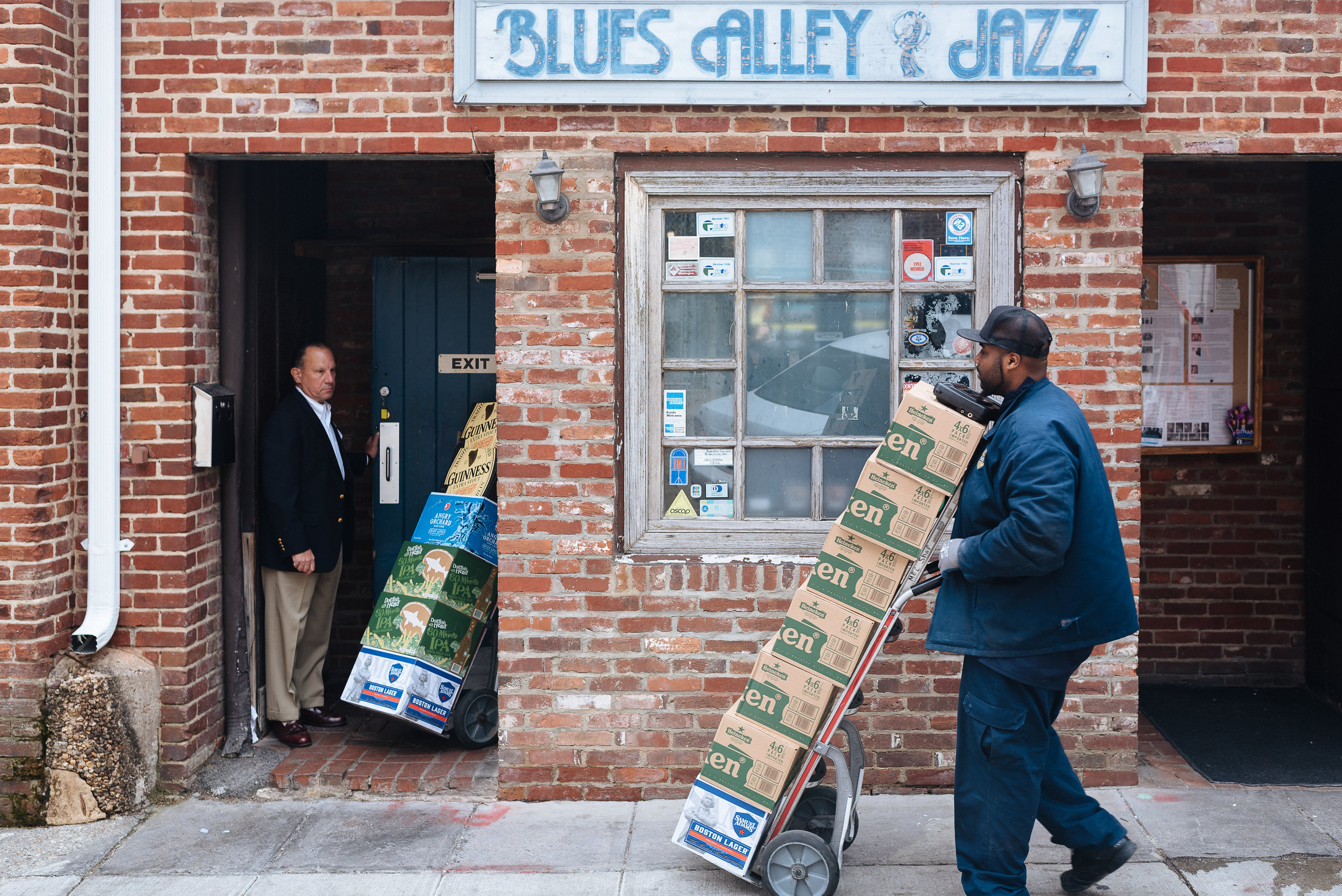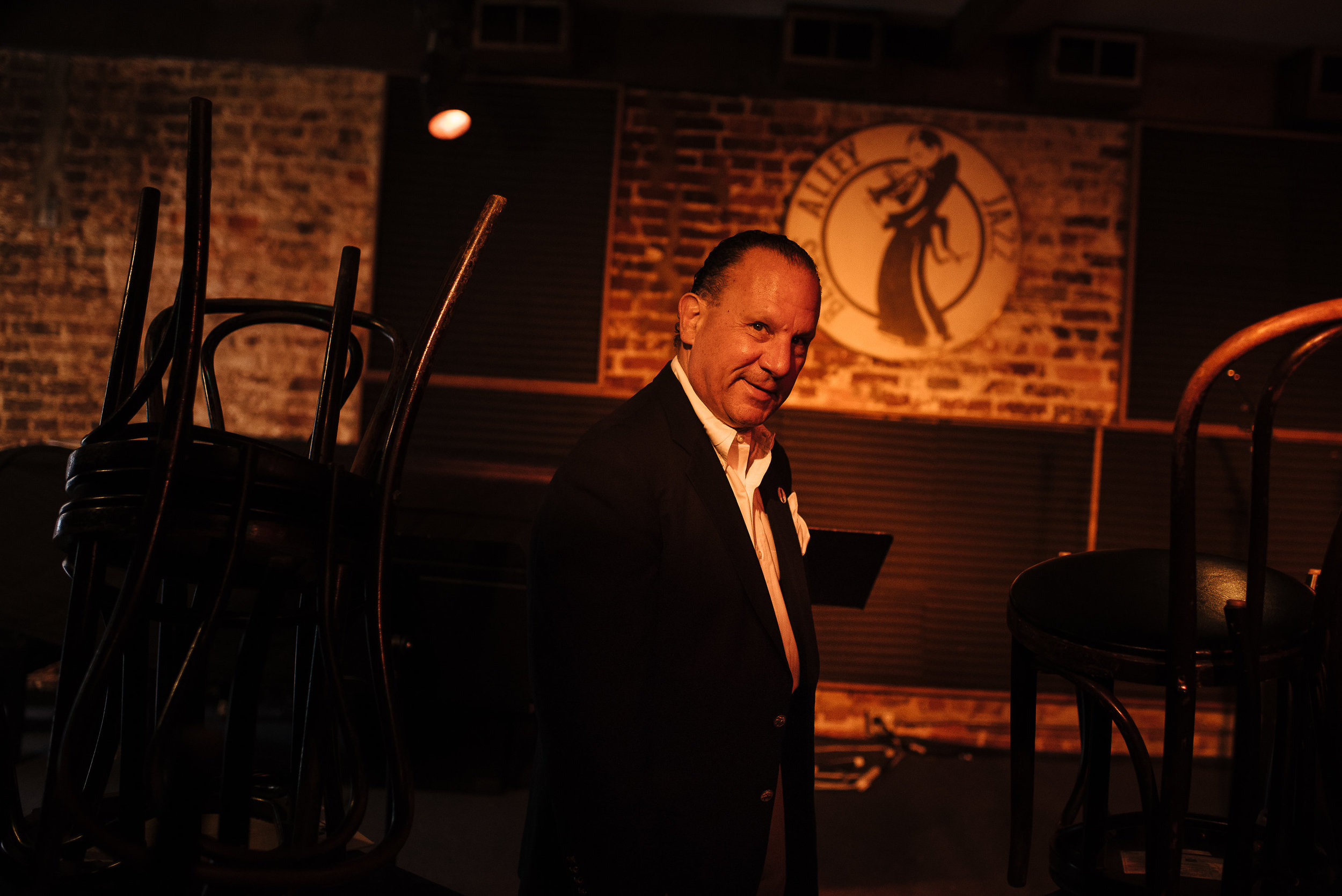‘I Saw My First Show in 1973’
Harry Schnipper takes a long pause, looking off to the left. Silence, and then a rush.
‘Spontaneity. Improvisation. Creativity. Deconstruction. Intuition. Interpretation. Dialogue. Narrative. Interfacing.’
Catch all that?
That, according to the owner of Blues Alley, is the difference between buying a jazz musician’s album and seeing them live.
‘If I were to tell you what’s the fundamental difference between seeing a trumpeter like Miles Davis in 1973 versus 1983—if it was Dave Matthews Band, nothing. They’re still gonna play the same set. But Miles’ fusion period incorporated an entirely different roster of musicians. You’re going to see a live jazz performance to be inspired.’
Inspiration seeps out in spades at Blues Alley, the country’s longest continually running jazz supper club. Opened in 1965, the historic jazz venue helped shape Georgetown during a time when it was known as Greenwich South.
‘You have to understand that in the 1960s we had the Civil Rights Movement and subsequently the Vietnam era protests, and the consequence of that was that Wisconsin Avenue and M Street became the crossroads of all of this social and political interface,’ Harry says. ‘Georgetown was funky and bohemian.’
Jazz and folk music experienced a movement during the same time, and Georgetown emerged as a premier music stop for many artists. While the nearby Cellar Door hosted all of the major acts, Harry describes Blues Alley as an amalgamation of entertainment.
‘We started off as a Dixieland jazz club because we were still that sleepy southern town that hadn’t fully formed, but after that we were in experimental mode. We were atypically a jazz club and have never deviated from that.’
Blues Alley solidified its prominence in jazz culture in the 1970s—the same decade that Harry discovered the venue. He saw his first show in 1973 as a junior in high school—Larry Coryell and The Eleventh House—and became a regular. Twenty years later, Harry was named CFO.
‘At that time our non-profit, the Blues Alley Jazz Society, was 8 years young and it was in state of transition,’ Harry says. ‘We didn’t know whether or not it would survive. I took it on as director and came up with a novel way of producing performances with both a for- and non-profit component. Today it’s one of the preeminent non-profit jazz music education programs in the country.’
Harry’s own jazz education is a storied one. Both as a fan and owner, he’s seen everybody who’s somebody. But it’s not the performances that speak to him.
‘It really isn’t about the show. I just had an incredible conversation with a performer who lives in Japan. I haven’t been able to contact him in decades. He was sitting there just canoodling on the piano. That’s my favorite part of it. When there’s no audience there and you’re sitting there by yourself watching and listening to an artist be inspired. That’s what makes ya tick.’
Motivated by the ‘curation of a concept,’ Harry’s passion is putting a gig together and marketing it to new generations. Jazz is far from dead, he’ll tell you. You just have to package it differently.
‘Do people still listen to Ella Fitzgerald and Thelonius Monk? Yeah. It’s just a question of methodology, platform and means. Kendrick Lamar’s ‘To Pimp a Butterfly’—[jazz musician] Kamasi Washington is on that album. Those jazz artists are producing a new type of music for a younger generation that may simultaneously incorporate spoken word, rap, hip hop. If you listen to Quincy Jones’ ‘Back On the Block’ album, it had Ella Fitzgerald and Ice Cube. Now is rap dead? Is rock dead? I don’t know. You just find new marketing platforms to reinvent your audience.’
Talk to Harry for five minutes and there’s no question the man is a walking homage to jazz—a genre that celebrated its 100th anniversary this year. He acknowledges the cross-pollination occurring in today’s music—‘genrecide’ as it’s often called—but sees that as a new opportunity to reach a younger generation of potential jazz converts: Millennials who crave experiences over things.
‘You’re not going to get that experience of seeing a jazz musician on YouTube or on your smartphone,’ Harry says. ‘You have to be engaged with them.’
So, too, must the industry be engaged with its audience. Harry produces an annual children’s jazz festival on the Mall, and directs the non-profit’s education and outreach programs—the Blues Alley Youth Orchestra and Blues Alley Jazz Summer Camp.
Harry is optimistic about the future of jazz, but he says there’s still bad news: When jazz clubs close, they don’t reopen. Georgetown can’t lose Blues Alley.
‘Musicians will come up to me and say ‘you have the best club I’ve ever played in my life.’ It’s my favorite club in the world to see a show.’



